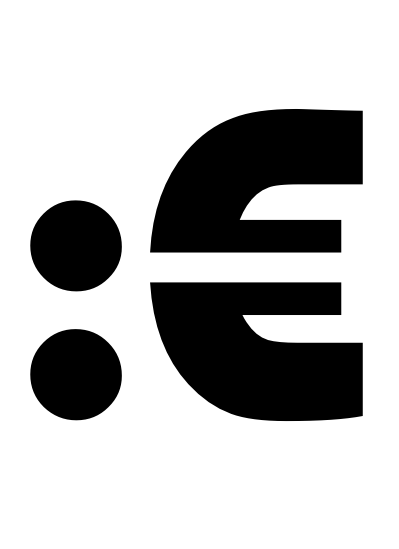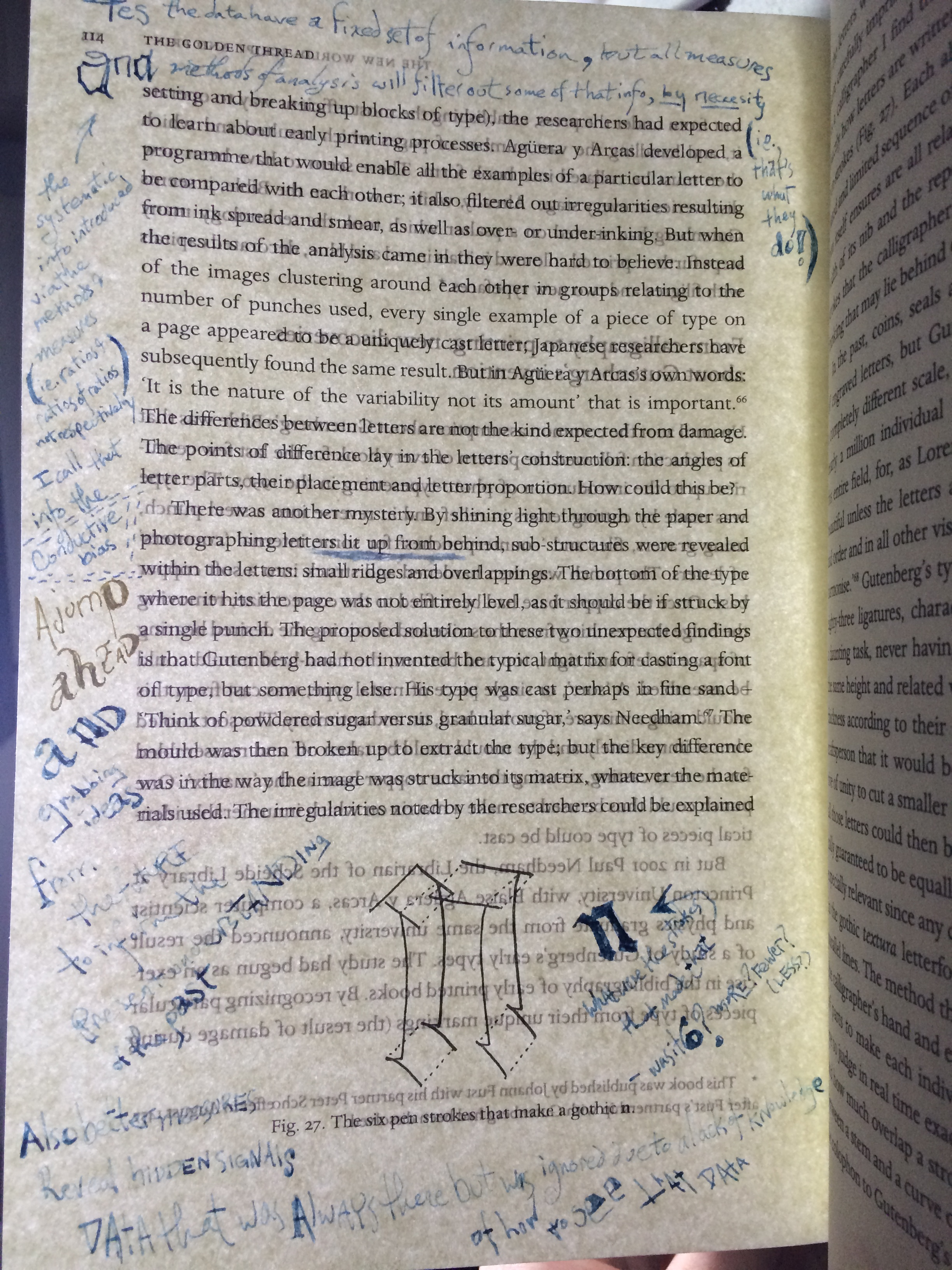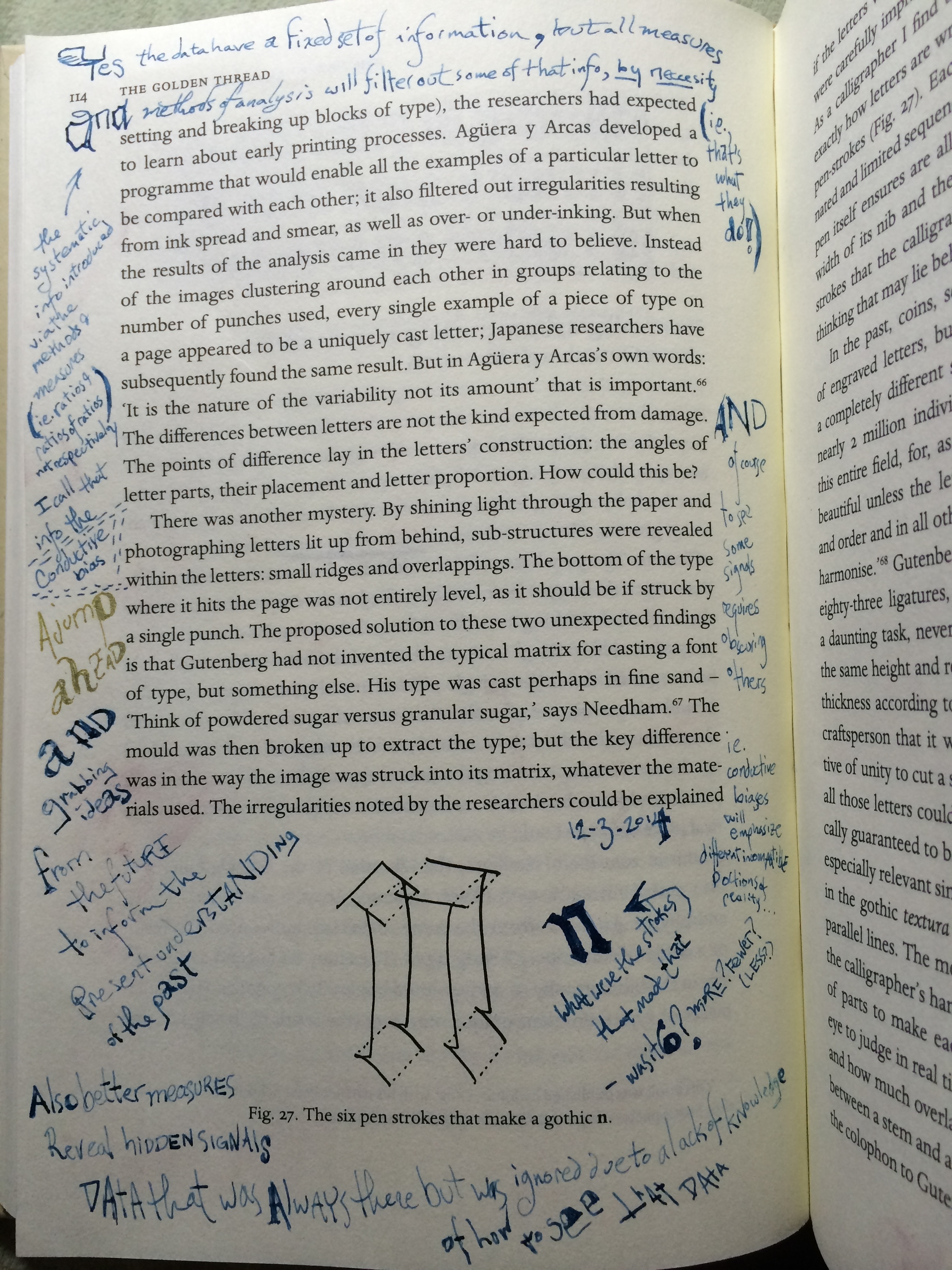On conductive biases (part 1)
••••
Inks, pens, paper, light, position, & an iPhone camera
12-3-2014
––––
Structure only becomes visible when viewed from the right perspective.
—
For another example the yes and no art post from awhile back.
—
––––
This post was partially inspired by an email regarding the fixity of information in data versus the processing applied to it, from Stéfan Van Der Walt.
The lazy way for me to respond is to just reject the distinction between data and it's processing (which has it's benefits in other situations; a conclusion I've come to through discussion with Tom Morgan and Jess Hamrick), but that is not the tact I pursue here.
Rather the intention here is to directly demonstrate the way in which the manner by which something is measured alters both the possibility of gleaning info from some object of study, as well as the relative difficulty of gleaning that information.
I call that effect of the medium on the information contained in the signal the conductive bias. (An idea that has developed out of conversations with Luke Maurits and Andrew Whalen)
But I do so, here, in addition by using a historical example as described in the original text(which I happened to flip to before I actually arrived there in the text, thus the reference in gold). It is about using light in just such a way to reveal structure and (presumably) intent from data that had previously been thought to be finite, fully explored and exhausted. Letting shadows become as vital to the understanding as the light itself (at least in gradation).
But in order to do so it requires altering much more than just the information required and in doing so other new signals can now be seen.
Any science of the particular rather than the general will have to rely on tricks like this to tease out its answers.
The book I'm writing this commentary on is The Golden Thread by Ewan Clayton. As modified by me(see last picture).
I'll let the images speak for themselves(that's what riddles are designed to do after all); and you must be bored of the exposition.
I'll post the text that I've written on my website if anyone desires to have it made more clear(since I know my writing is not always the easiest to follow).
Look for a lot more content to arrive at my site in the coming weeks as well.
I hope you've enjoyed and, as usual, comments are always welcome.
Cheers, :€
Clarification of text.
This is further clarification/commentary on a post made elsehwere, photos were included in the original.
Top note
Yes the data have a fixed set of information, but all measures and[1] methods of analysis will filter out some of that info, by necessity (i.e., that's what they do!)
Left Note
pointer: [1] The systematic info introduced via the methods & measures (i.e., ratios & ratios of ratios, not respectively) I call that the
— — conductive bias. — —
Bottom Note
A jump ahead and grabbing ideas from the future to inform the present understanding of the past.
Also, better measures reveal hidden signals — data that was always there but was ignored due to a lack of knowledge of how to see that data.
Right note
And of course to see some signals requires obscuring others. I.e., conductive biases will emphasize different incompatible portions of reality…
12-3-2014
what were the strokes that made that?
— was it 6? more? fewer?(less?)



